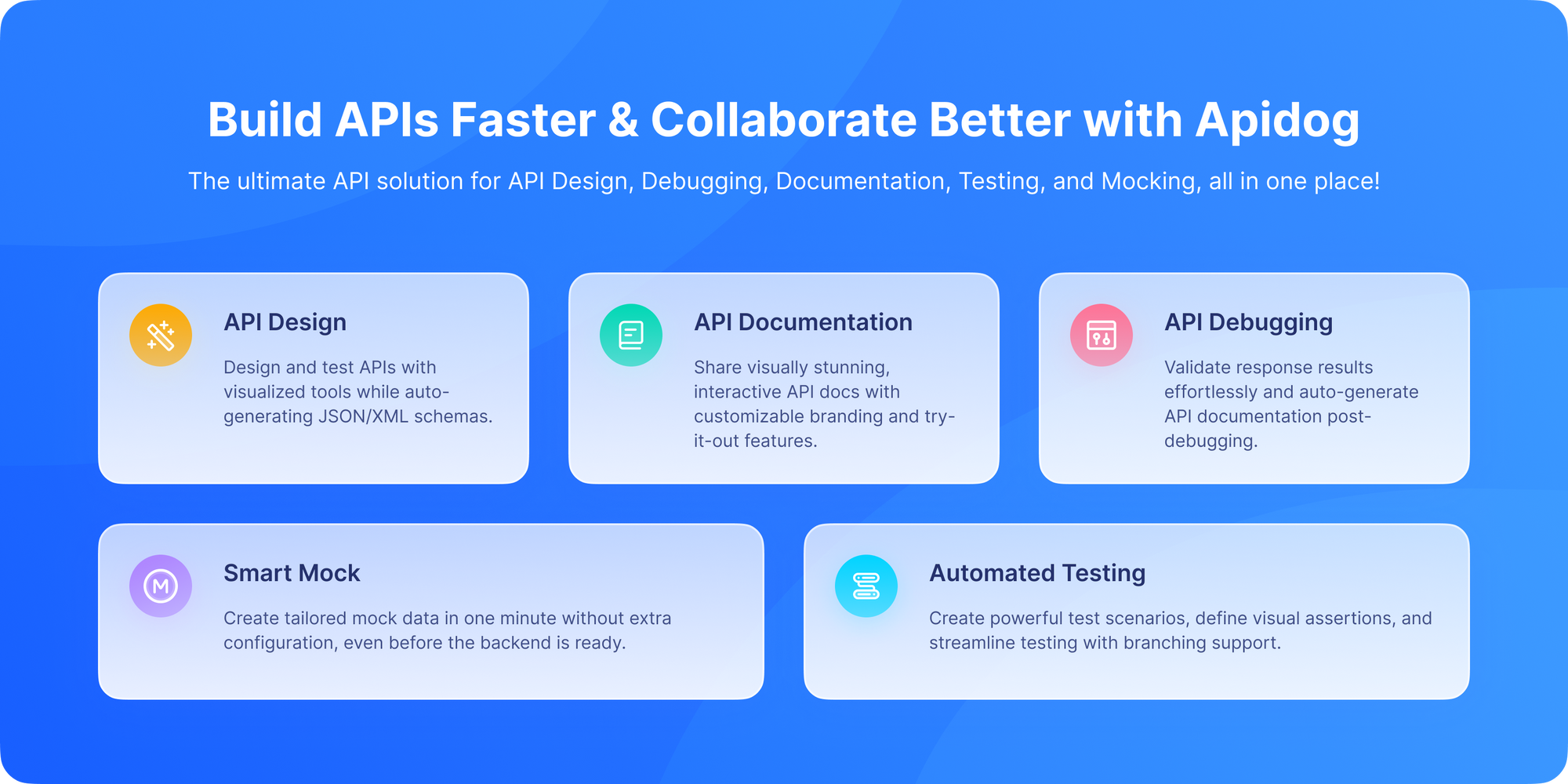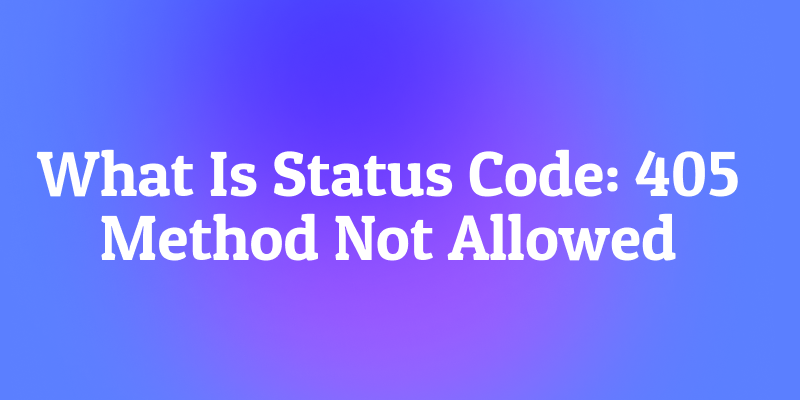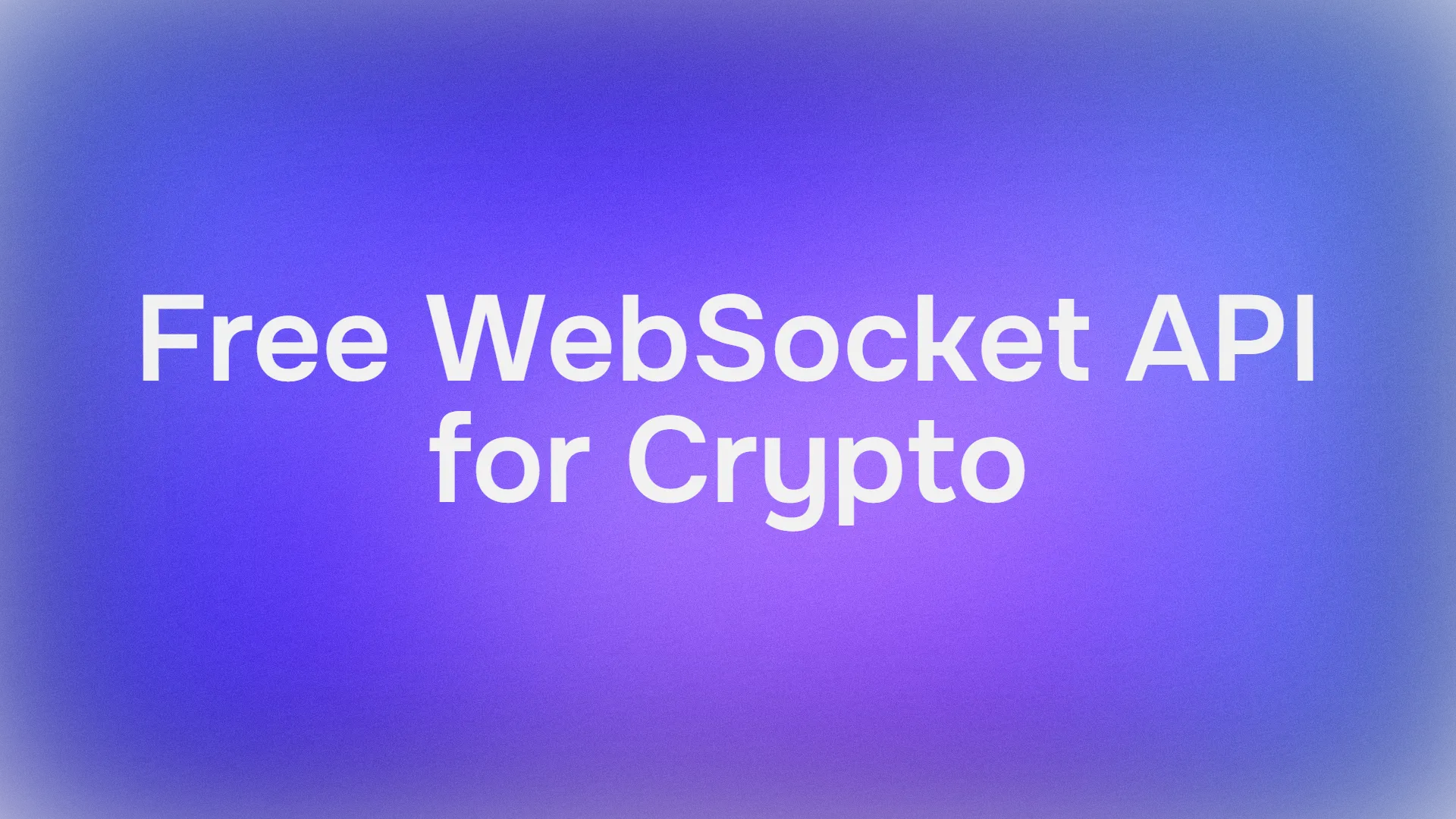You're trying to hang a picture on your wall. You have a screwdriver, but what you really need is a hammer. No matter how hard you try, that screwdriver just isn't going to drive that nail into the wall. The tool you're using doesn't match the task you're trying to accomplish.
This is the exact situation captured by one of HTTP's most specific and helpful error codes: 405 Method Not Allowed.
Unlike the more general 404 Not Found (which says "I can't find what you're looking for") or 400 Bad Request (which says "I don't understand what you're saying"), the 405 error is incredibly precise. It says: "I found the resource you're looking for, but you're using the wrong HTTP method to interact with it."
It's the server's way of telling you, "I know what /api/users is, but you can't DELETE it. Try using GET instead."
If you're a developer working with RESTful APIs, understanding the 405 status code is crucial for building and consuming APIs correctly.
In this detailed blog post, we'll explore everything you need to know about the 405 Method Not Allowed status from what it means, why it occurs, common scenarios, how to fix it, and best practices for handling it gracefully.
Now, let's explore the purpose, mechanics, and practical implications of the HTTP 405 Method Not Allowed status code.
The Problem: HTTP Methods and RESTful Design
To understand 405, we need to quickly revisit how RESTful APIs work. In RESTful design, the same URL can behave differently depending on the HTTP method (verb) you use:
GET /api/users- Retrieve a list of usersPOST /api/users- Create a new userPUT /api/users/123- Update user 123 (full replacement)PATCH /api/users/123- Partially update user 123DELETE /api/users/123- Delete user 123
The 405 error occurs when you try to use a method that the server hasn't implemented for that specific endpoint. For example, trying to POST to /api/users/123 (which typically only supports GET, PUT, PATCH, DELETE) would likely return a 405.
What Does HTTP 405 Method Not Allowed Actually Mean?
The 405 Method Not Allowed status code indicates that the server knows the target resource (the URL you requested) exists, but does not support the HTTP method used in the request.
There's one crucial requirement for a proper 405 response: it must include an Allow header that lists the HTTP methods that are supported for the requested resource.
A proper 405 response looks like this:
HTTP/1.1 405 Method Not AllowedAllow: GET, HEAD, OPTIONSContent-Type: application/json
{
"error": "Method Not Allowed",
"message": "POST method is not supported for this endpoint."
}
Let's break down the key component:
Allow: GET, HEAD, OPTIONS: This is the most important part. This header tells the client exactly which methods are permitted. It's like the server saying, "You can't use a hammer here, but you can use these three tools instead."
In simple terms, the client sent a valid HTTP method like GET, POST, PUT, DELETE, etc., but the server does not allow that particular method on the URL or endpoint requested.
Why Does a 405 Error Occur?
A 405 happens when the method used in the HTTP request is not permitted for the resource. Common reasons include:
- Calling GET on an endpoint that only supports POST.
- Using PUT where only DELETE is supported.
- Sending OPTIONS requests to resources that don’t allow it.
- Misconfigured server routing or HTTP method handlers.
- Incorrect REST API usage or outdated documentation.
Understanding the root cause helps fix the issue efficiently.
Why Servers Return 405 Instead of 404
You might wonder why not just return a 404 Not Found?
Well, a 404 means the resource isn’t found at all, but a 405 means the resource exists, just not with that method.
This distinction is important for developers because it tells you:
- You’re in the right place.
- You’re just using the wrong tool.
How It Works: A Concrete Example
Let's imagine a read-only API endpoint that provides product information.
The Valid Request:
GET /api/products/123 HTTP/1.1Host: api.example.com
Server Response: 200 OK with product data.
The Invalid Request:
A client mistakenly tries to update the product using PUT:
PUT /api/products/123 HTTP/1.1Host: api.example.comContent-Type: application/json
{"name": "New Product Name"}
The Server's 405 Response:
HTTP/1.1 405 Method Not AllowedAllow: GET, HEADContent-Type: application/json
{
"error": "Method Not Allowed",
"message": "The PUT method is not supported for this resource."
}
The Allow: GET, HEAD header clearly tells the client that this is a read-only endpoint. The client now knows exactly what went wrong and how to fix it.
Why the Allow Header is So Important
The Allow header transforms the 405 from a frustrating error into a helpful conversation. Without it, a client would be left guessing:
- With
Allowheader: "I can't PUT here, but I can GET or use HEAD." - Without
Allowheader: "I can't PUT here. ¯_(ツ)_/¯ Good luck figuring out what you can do!"
This is why the HTTP specification mandates that servers include the Allow header in 405 responses. It's what makes the code genuinely useful rather than just frustrating.
What Does a 405 Response Look Like?
Servers respond with 405 status along with an Allow header indicating the permitted HTTP methods. RFC 7231 (HTTP/1.1 specification) instructs that when a 405 status code is sent, the server MUST include an Allow header listing the allowed HTTP methods for that resource.
Example response:
textHTTP/1.1 405 Method Not Allowed Allow: GET, HEAD, OPTIONS Content-Type: text/html
<html> <body> <h1>405 Method Not Allowed</h1> <p>The requested method POST is not supported for this resource.</p> </body> </html>The Allow header is key because it informs the client which methods are acceptable, enabling corrections.
This way, clients know what methods are supported and can adjust their requests accordingly.
Common Scenarios That Trigger 405 Errors
1. Read-Only Endpoints
As in our example above, some resources are intentionally read-only. You can retrieve them with GET, but you cannot modify them with PUT, PATCH, or DELETE.
2. Incorrect Method for the Action
This is probably the most common cause. Developers mix up which method to use for which action.
- Using
GETto create a resource (should bePOST) - Using
POSTto update a resource (should bePUTorPATCH) - Using
DELETEon a collection URL like/api/users(should be on a specific resource like/api/users/123)
3. Missing Method Implementation
The API designer may have simply not implemented a particular method for an endpoint. For example, an endpoint might support GET and POST but not PUT or DELETE.
4. Web Application Firewalls (WAFs) and Security Rules
Sometimes, security configurations intentionally block certain methods. For example, a WAF might block PUT, PATCH, and DELETE methods on certain paths for security reasons, returning a 405.
405 vs. Other 4xx Errors: Knowing the Difference
It's important to distinguish 405 from other client error codes.
405 Method Not Allowedvs.404 Not Found:
405 means "This URL exists, but not for that method."
404 means "This URL doesn't exist for any method."
405 Method Not Allowedvs.501 Not Implemented:
405 means "I know what you want to do, but I won't let you do it for this specific resource." (Client error)
501 means "I don't know how to handle this HTTP method at all, for any resource." (Server error)
405 Method Not Allowedvs.403 Forbidden:
405 means "This operation isn't available to anyone." (Method limitation)
403 means "This operation is available, but not to you with your current permissions." (Authorization limitation)
Common Scenarios Where 405 Appears
- RESTful APIs: Attempting to PUT to an endpoint that supports only GET or POST.
- Web forms: Submitting a form with a GET method to an endpoint expecting POST.
- Incorrectly configured routes: Server routes not handling certain methods properly.
- Middleware issues: Security software blocking or filtering specific methods.
- Static resources: Requesting POST on a static image or file URL.
How Clients Should Handle 405 Method Not Allowed
When clients receive a 405 response, they should:
- Check the
Allowheader to identify supported HTTP methods. - Modify the request to use an allowed method.
- Retry the request accordingly.
- Handle errors gracefully in user interfaces or workflows.
- Inform users about unsupported actions clearly.
How Developers Can Fix 405 Errors
- Review server routing and configuration: Ensure routes handle all expected HTTP methods.
- Check API documentation: Verify correct HTTP method usage.
- Implement method handlers: Define handlers for all allowed methods explicitly.
- Respond with proper
Allowheaders: Improve client usability. - Validate client requests: Catch incorrect method usage early in your client apps.
- Log 405 errors: To monitor and fix recurring issues.
Examples of HTTP Methods and Allowed Usage
| HTTP Method | Typical Use Case |
|---|---|
| GET | Retrieve resource or data |
| POST | Create resource or perform actions |
| PUT | Update or replace resource |
| DELETE | Remove resource |
| PATCH | Partially update resource |
| OPTIONS | Inquire about supported methods |
A mismatch between method and resource capabilities triggers 405.
Testing 405 Responses with Apidog

Testing that your API correctly returns 405 for unsupported methods is a hallmark of robust API development. Apidog makes this process incredibly straightforward.
With Apidog, you can:
- Test All Methods Easily: Take any endpoint URL and quickly switch between GET, POST, PUT, PATCH, DELETE methods with a single click to see which ones are supported.
- Validate the Allow Header: When you get a
405response, Apidog will clearly show you theAllowheader in the response details. You can verify it contains the correct list of methods. - Automate Method Testing: Create test suites that automatically verify that unsupported methods return
405with the properAllowheader, while supported methods return the expected2xxstatus. - Debug Client-Side Code: If you're building a client application that receives a
405, you can use Apidog to replicate the exact request and response, helping you understand and fix the issue in your client code. - Document API Behavior: Use Apidog to document which methods are supported for each endpoint, making this information clear to other developers who consume your API.
Instead of guessing, you get clarity in seconds. Download Apidog for free and make HTTP error troubleshooting effortless.
Best Practices for Handling 405s
For API Developers (Server Side):
- Always include the
Allowheader in405responses. This is not optional for a compliant HTTP server. - Be consistent in your method usage across your API. If most collection endpoints support GET and POST, don't have one that only supports GET without a good reason.
- Provide a helpful error message in the response body, especially for APIs consumed by other developers.
- Consider using OPTIONS: Implement the OPTIONS method for your endpoints, which should return the same
Allowheader. This gives clients a way to discover supported methods without triggering errors.
For API Consumers (Client Side):
- Check the
Allowheader when you receive a405. It tells you exactly what you can do instead. - Use the OPTIONS method to discover supported methods before trying other operations.
- Handle
405errors gracefully in your code—don't treat them as fatal errors, but as guidance on how to correct your request.
The Role of the OPTIONS Method
The OPTIONS method is the proactive cousin of the 405 response. Instead of trying an operation and getting rejected, a client can first ask the server what methods are supported:
Request:
OPTIONS /api/products/123 HTTP/1.1Host: api.example.com
Response:
HTTP/1.1 200 OKAllow: GET, HEAD, OPTIONS
This is a much more elegant way to discover an API's capabilities without triggering errors.
Troubleshooting Common 405 Issues
- Double-check route definitions and HTTP verb handlers.
- Review proxy or firewall configurations that may block certain methods.
- Look for spelling errors or discrepancies in client requests.
- Use debugging tools like Apidog to capture complete request/response cycles.
- Test across environments to spot production-specific issues.
Security Implications of 405
405 can also have security implications:
- Disabling unsafe methods (like
TRACE) helps prevent attacks. - Revealing too much in the Allow header might give attackers hints.
- Consistent 405 handling avoids leaking server details.
Conclusion: From Frustration to Clarity
The 405 Method Not Allowed status code isn’t just a random roadblock. It’s a valuable signal that the resource exists but doesn’t accept the method you used. The HTTP 405 Method Not Allowed status code is a perfect example of how good API design provides clear, actionable feedback. It transforms what could be a confusing dead end into a helpful signpost that says, "You can't go this way, but here are the paths that are open to you."
For API developers, implementing proper 405 responses with accurate Allow headers is a mark of professionalism and attention to detail. For API consumers, understanding how to read and respond to 405 errors is key to building robust, self-correcting applications.
So the next time you encounter a 405 error, don't get frustrated read the Allow header. It's the server trying to help you succeed. And when you're building or testing APIs yourself, a tool like Apidog will give you the power to ensure your method usage is correct and your error handling is as helpful as it should be.



